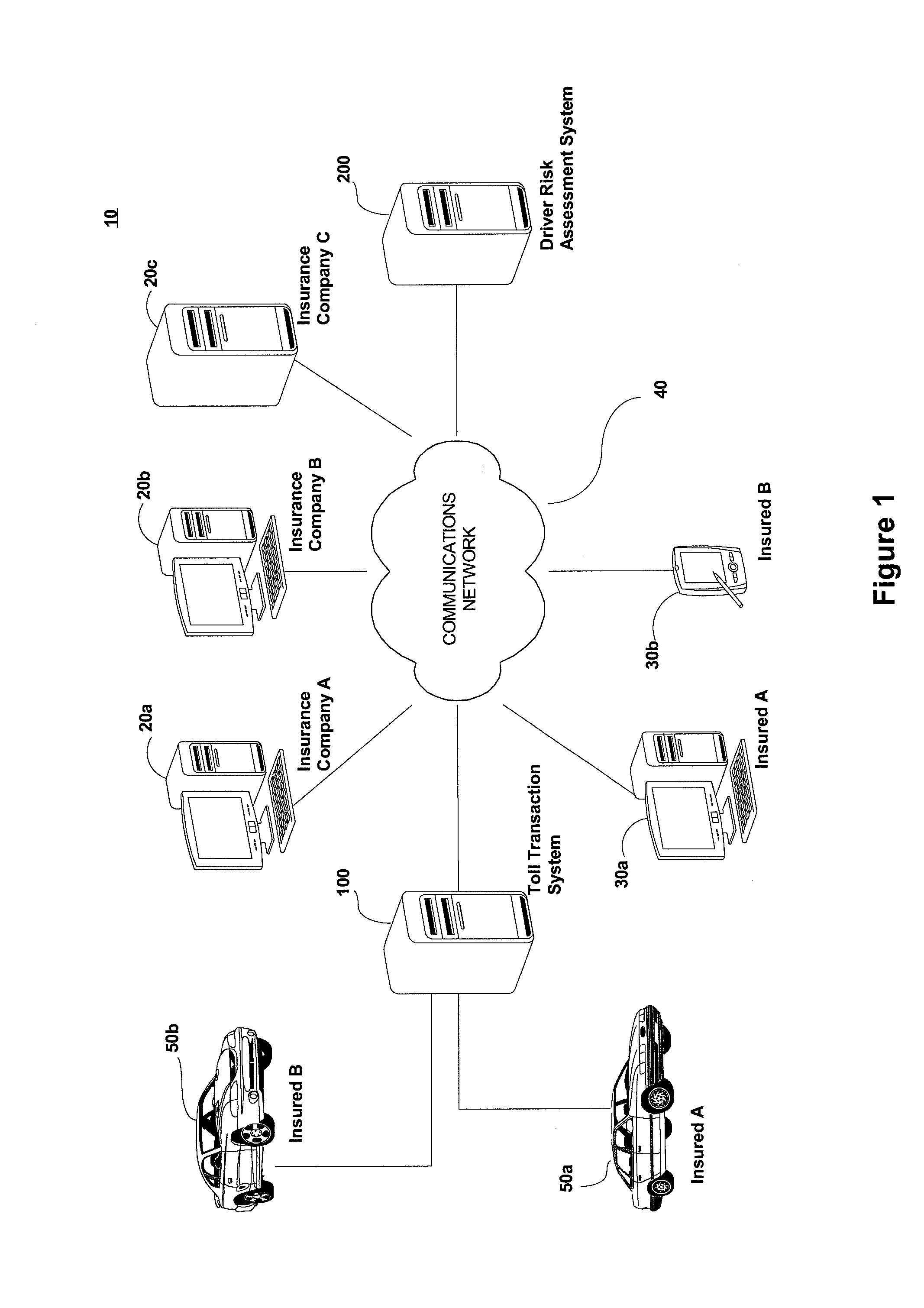A principal problem with prior art telematic-based systems, is that they are only installed and monitored for a very short period of time, such as 30 or 60 days, after which risk assumptions are made based on an evaluation of the limited data gleaned during that short period of time.
There is no means to account for a driver who modifies his / her driving behavior and who appears to drive safely only during that short period of time.
Moreover, drivers have the opportunity to modify their behavior during that time period, which renders an inaccurate assessment of driver risk and circumvents an insurance companies attempt to more accurately price a policy.
As a result, the use of
telematics is largely assumption-based, on very limited data, and thus it is relatively unlikely to yield an accurate representation of driver risk.
Another problem with respect to prior art
telematics-based systems is the lack of capability to consider or process stored trip data the driver accrued prior to device installation.
By design, telematic or other devices, only
record vehicle performance data beyond the point of installation and lack the means to process any available driver performance data prior to installation.
Thus, insurance companies can only make risk assumptions and price a policy based on captured driver data beginning at the point of installation and ending at the point of removal of the
telematics device, and are unable to access and correlate or consider several years of available driver trip data.
Again, drivers may readily modify their driving behavior during the short
evaluation period, thereby limiting and distorting the driver's perceived
risk profile.
Another important deficiency of prior art systems is that they lack the ability to compare and correlate individual driver behaviors recorded on the device to the surrounding traffic, road and weather conditions.
For example, a telematics-based solution doesn't recognize if the driver is traveling on a
snow covered highway or if the vehicle is in congested traffic.
An additional deficiency with these prior art systems is that they were never intended to make behavior comparisons of the driver to the behavior of other drivers traveling in near proximity.
Such prior art systems are unable to make behavioral comparisons and differentiation that can be used to more accurately determine driver behaviors and risk.
For example, although these prior art systems can determine your travel speed at 65 MPH, they cannot determine that the congested traffic around you is traveling at 45 MPH.
Further still, they cannot differentiate between appropriate hard braking / accelerating, and risky behavior involving hard braking / accelerating.
An obvious deficiency of telematics-based systems is that they are specifically-designed to be installed in individual vehicles and assess risk based on captured data one vehicle at a time.
Compiling these datasets through the use of telematics raises several data-related deficiencies in the datasets.
For example, a particular insurance company may use telematics and incur the associated expenses and discover find that a certain percentage of drivers demonstrate higher risked behaviors and thus are not candidates for a particular discount or for a particular insurance policy.
As an illustration, if 10,000 telematics devices are deployed and the data captured and analyzed reveals 3000 of those drivers to be higher risk, then the company has expended 30% of the overall acquisition cost on these drivers unnecessarily.
Lastly, since the data is collected one driver at a time, the data is likely to be very slow to accumulate.
Another problem in many prior art telematics-based systems is that they experience data capture failures as a result of cellular-
network communication interruptions and hardware failures that lead to less-accurate
risk assessment and subsequent policy pricing.
Drivers who utilize a telematics device and are subsequently determined to be a higher risk driver, have identified and potentially prejudiced themselves to an insurance company as such.
 Login to View More
Login to View More  Login to View More
Login to View More 


